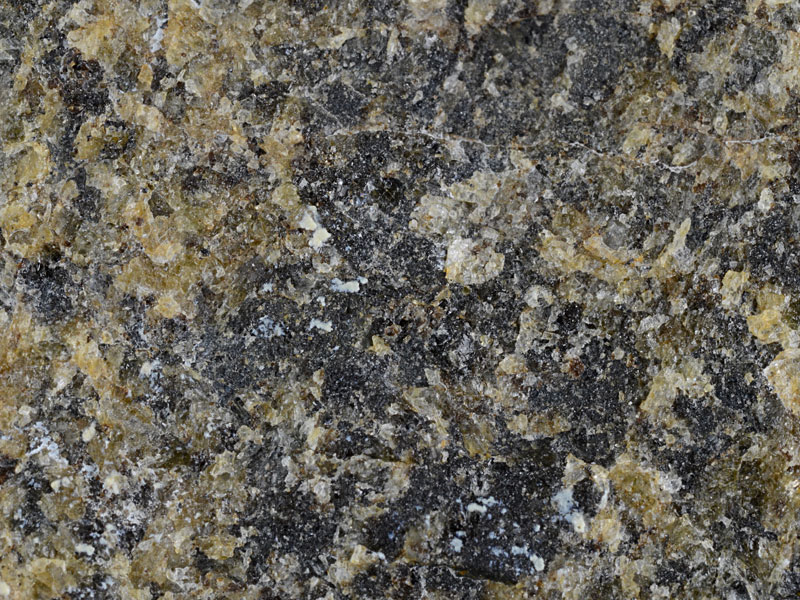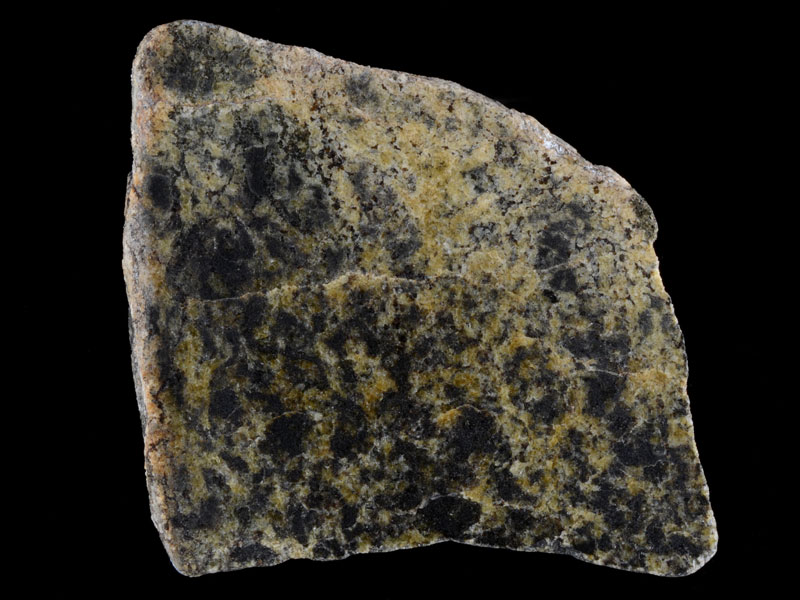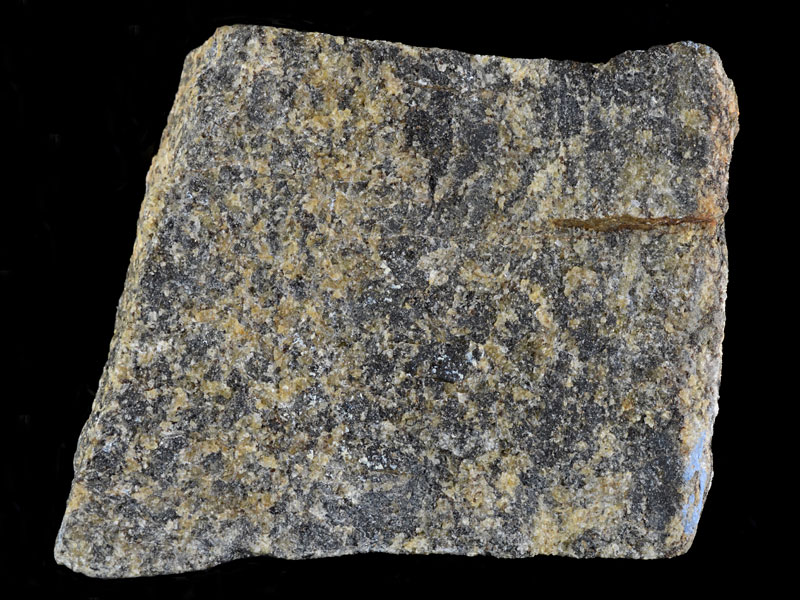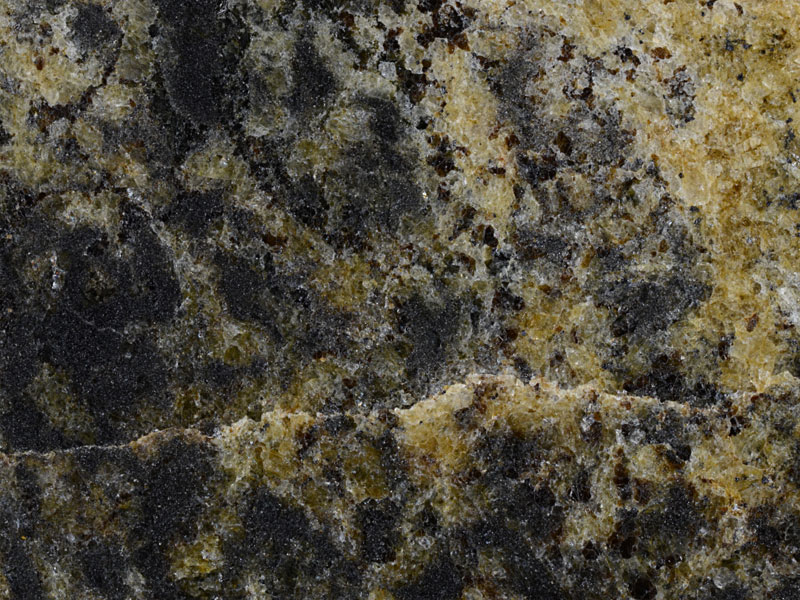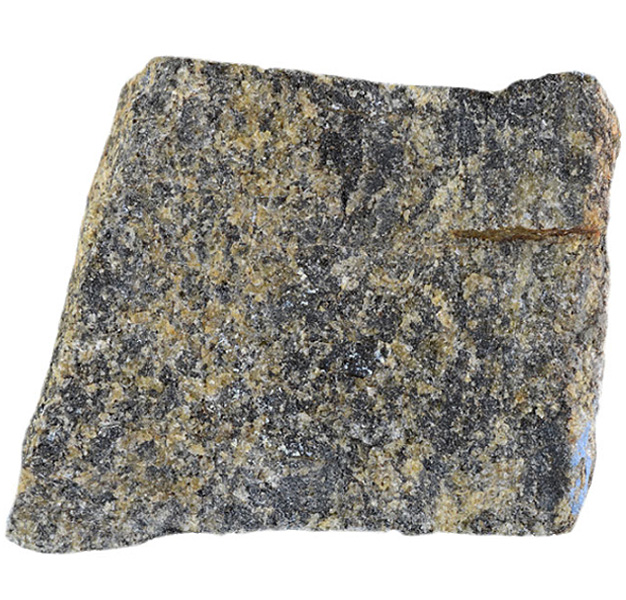
Fact sheet
This sample of pyroxene hornfels comes from Sandy Corrie, on the Isle of Rum, Scotland. This thermally-altered hornblende gneiss is from one of several areas of Lewisian Gneiss enclosed by the Paleocene age Central Complex of Rum. On Rum, Lewisian Gneiss only occurs within the Central Complex which led E B Bailey (in 1945 Quarterly Journal of the Geological Society) to postulate substantial central uplift on the Main Ring Fault. However, the presence of Lower Jurassic rocks within this fault system shows that significant subsidence has also occurred.
In thin section, the original coarse-grained texture of the Lewisian Gneiss has been partially recrystallised. The original plagioclase laths remain as large but deformed crystals, but the amphibole has been almost completely recrystalised to finer-grained pyroxene (enstatite and augite) and opaques.
The United Kingdom Virtual Microscope (UKVM) collection consists of igneous, sedimentary and metamorphic rocks from around the UK.
It is intended as a teaching resource, helping to tell the story of the common rock types and how they form, and reflecting the history of the UK at the margins of the continent of Europe. The collection is a series of teaching sets, for example igneous rocks from the North Atlantic Igneous Province and SW England; high-temperature metamorphic rocks from Scotland and low-temperature metamorphic rocks from Wales; and sedimentary rocks, including English limestones and sandstones.
